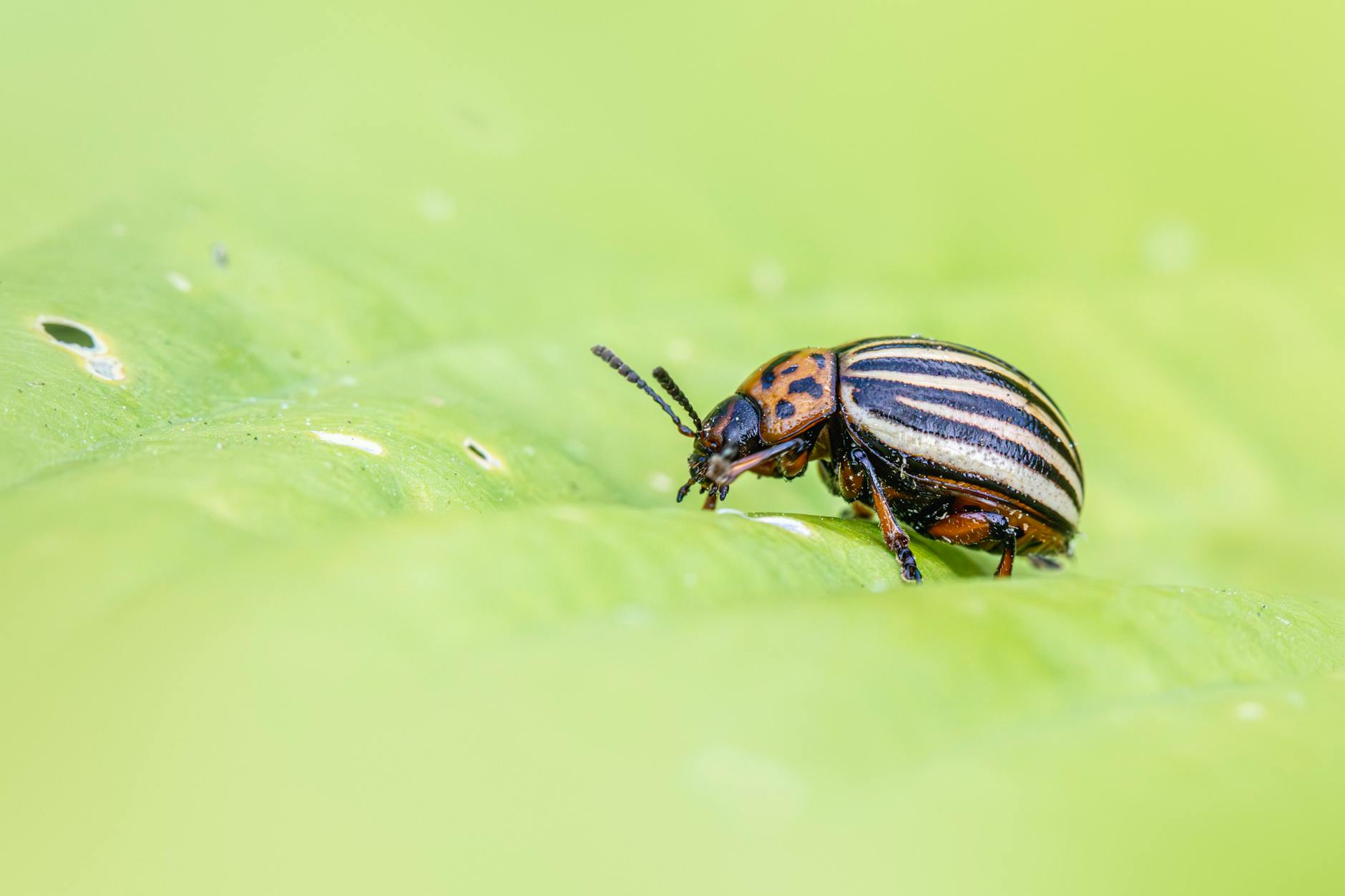In a world where food security is paramount, maximizing crop yields has become more critical than ever. 🌾 Farmers face mounting pressure to produce more with limited resources, battling unpredictable weather patterns, pest invasions, and soil degradation. But what if there were ways to significantly boost your harvest without breaking the bank?
Enter the realm of smart farming techniques and cutting-edge agricultural innovations. From precision irrigation to leveraging satellite technology, the landscape of modern farming is evolving rapidly. These advancements aren't just for large-scale operations; they're accessible to farmers of all sizes. Imagine increasing your crop yield by up to 30% while using fewer resources - it's not just a dream, it's a reality within reach.
In this blog post, we'll explore 7 expert tips that can revolutionize your farming practices. Whether you're struggling with soil fertility, battling pests, or simply looking to optimize your planting strategies, we've got you covered. Get ready to transform your fields into thriving, high-yield powerhouses that'll make your neighbors green with envy! 🚜💪
Soil Management for Maximum Fertility

A. Conducting regular soil tests
Regular soil testing is a critical practice for maximizing soil fertility and crop yields. Dr. Ajay Nair from Iowa State University emphasizes that annual soil testing, ideally conducted in spring or fall, is essential to assess:
-
Nutrient levels
-
Organic matter content
-
pH levels
-
Other soil characteristics
Soil testing provides farmers with crucial information to make informed decisions about soil management and fertilization strategies. It helps identify nutrient deficiencies and imbalances, allowing for targeted interventions to optimize soil fertility.
B. Implementing crop rotation
Crop rotation is a key strategy for maintaining and improving soil fertility. This practice involves:
-
Alternating different crops in a specific field over successive growing seasons
-
Preventing the depletion of specific nutrients
-
Reducing pest and disease pressure
-
Improving soil structure and organic matter content
Implementing crop rotation can lead to more sustainable and productive farming practices, ultimately contributing to higher crop yields.
C. Using organic matter and compost
Incorporating organic matter and compost into the soil is crucial for enhancing soil fertility. The benefits include:
| Benefit | Description |
|---|---|
| Nutrient enrichment | Organic matter enriches soil with nitrogen and phosphorus |
| Improved soil structure | Enhances soil texture and water-holding capacity |
| Increased microbial activity | Promotes beneficial soil organisms |
| Long-term soil health | Contributes to sustainable soil fertility |
The use of organic fertilizers, such as manure, has shown significant improvements in soil properties and crop yields. An 8-year field experiment in South China demonstrated that manure application led to:
-
Higher and more stable crop yields
-
Increased soil organic carbon (SOC)
-
Enhanced levels of total nitrogen, available nitrogen, total phosphorus, and available phosphorus
D. Balancing pH levels
Maintaining the proper soil pH is crucial for optimal nutrient availability and plant growth. Key points include:
-
Most vegetables thrive in a pH range of 6.0 to 7.0
-
Some crops may require higher pH levels for optimal growth
-
Regular soil testing helps monitor pH levels
-
Lime application can be used to adjust soil pH when necessary
Balancing pH levels ensures that plants can efficiently uptake essential nutrients, leading to improved crop health and yields.
Now that we have covered the essential aspects of soil management for maximum fertility, we'll explore the next critical factor in boosting crop yields: Precision Irrigation Techniques. Effective water management is closely linked to soil health and plays a vital role in optimizing plant growth and productivity.
Precision Irrigation Techniques

Now that we have covered the importance of soil management for maximum fertility, let's delve into precision irrigation techniques that can significantly boost crop yields.
A. Installing drip irrigation systems
Drip irrigation is a highly efficient method for large-scale farming, delivering water directly to plant roots. This system minimizes water and fertilizer loss, making it an excellent choice for farmers looking to optimize their water usage. By installing drip irrigation, farmers can:
-
Reduce water consumption by up to 40%
-
Lower operational costs
-
Decrease greenhouse gas emissions
B. Utilizing soil moisture sensors
Implementing soil moisture sensors is crucial for precision irrigation. These sensors provide real-time data on soil moisture levels, allowing farmers to make informed decisions about when and how much to irrigate. Benefits include:
-
Optimal water application timing
-
Prevention of over-irrigation
-
Enhanced crop health and yield
C. Implementing deficit irrigation strategies
Deficit irrigation is an innovative approach that can lead to significant water savings without compromising crop yields. This technique involves:
-
Applying less water than the crop's full water requirements
-
Timing irrigation to critical growth stages
-
Monitoring crop stress levels
| Irrigation Method | Water Savings | Energy Savings | Yield Impact |
|---|---|---|---|
| Conventional | Low | Low | Baseline |
| Drip | Up to 40% | High | Increased |
| Deficit | High | Moderate | Maintained |
To maximize the benefits of precision irrigation:
-
Adjust practices according to seasonal and climatic variations
-
Water during optimal times to minimize evaporation (early morning or late evening)
-
Incorporate organic materials like compost and mulch to enhance soil filtration
By implementing these precision irrigation techniques, farmers can save between 37 to 68 billion gallons of water and prevent 1.13 to 2.07 gigatons of CO2 emissions. Additionally, upgrading to efficient irrigation systems can generate substantial net operational savings, making it a win-win for both the environment and the farmer's bottom line.
With these precision irrigation techniques in place, farmers can ensure their crops receive the right amount of water at the right time. This optimal water management sets the stage for our next topic: selecting high-yield crop varieties that can fully capitalize on these improved growing conditions.
Selecting High-Yield Crop Varieties

Now that we've covered precision irrigation techniques, let's delve into another crucial aspect of boosting crop yields: selecting high-yield crop varieties. This step is essential for maximizing your farm's productivity and ensuring a successful harvest.
Researching climate-adapted seeds
When selecting crop varieties, it's vital to consider seeds that are well-adapted to your specific climate. Climate plays a significant role in determining the success of your crops. By choosing seeds that are suited to your local weather conditions, you can significantly improve your chances of a bountiful harvest.
| Climate Factor | Seed Characteristic |
|---|---|
| Temperature | Heat or cold tolerance |
| Rainfall | Drought resistance |
| Growing Season | Maturation time |
Considering disease-resistant cultivars
Disease resistance is a crucial factor in selecting high-yield crop varieties. By choosing cultivars that are naturally resistant to common diseases in your area, you can reduce the need for pesticides and minimize crop losses. This approach not only increases yields but also contributes to more sustainable farming practices.
-
Look for varieties with proven resistance to local pathogens
-
Consider multi-disease resistant options for comprehensive protection
-
Consult local agricultural extension services for region-specific recommendations
Exploring genetically modified options
Genetically modified (GM) crops can offer significant advantages in terms of yield and resistance to pests and diseases. While this option may be controversial, it's worth exploring the potential benefits for your specific farming situation.
-
GM crops may provide enhanced pest resistance
-
Some varieties offer improved drought tolerance
-
Consider the regulatory environment and market acceptance in your area
Testing hybrid varieties
Hybrid varieties often outperform traditional cultivars in terms of yield and vigor. Testing different hybrid options can help you identify the best performers for your specific conditions.
-
Plant test plots with various hybrid varieties
-
Compare performance across multiple growing seasons
-
Evaluate factors such as yield, disease resistance, and quality
Remember to diversify your planting strategy by including a range of hybrids to mitigate risks associated with weather variability and pest outbreaks. As agronomist Matt Dolch advises, planting various hybrids can help spread risk and optimize overall farm performance.
With these high-yield crop varieties selected, we'll next explore how to optimize planting practices to further boost your crop yields and maximize the potential of your chosen seeds.
Optimizing Planting Practices

Now that we've covered selecting high-yield crop varieties, let's focus on optimizing planting practices to further boost crop production.
A. Determining ideal planting dates
Selecting the right planting dates is crucial for maximizing crop yields. Research has shown that planting within specific temporal windows, influenced by soil temperature and fertilizer application, significantly impacts crop productivity. To determine the ideal planting dates:
-
Analyze historical weather data
-
Calculate Growing Degree Units (GDUs)
-
Use predictive models like TBATS or 1D-Convolutional Neural Network (CNN)
The CNN model has demonstrated superior accuracy in forecasting GDUs, which are vital for estimating crop maturity and optimal harvesting weeks.
B. Adjusting plant spacing and density
Proper plant spacing and density are essential for optimal crop growth. Different sowing methods offer various advantages:
| Sowing Method | Advantages | Disadvantages |
|---|---|---|
| Broadcasting | Quick for large areas | Uneven distribution, higher seed requirement |
| Behind country plough | Suitable for bold-seeded crops | Requires adequate soil moisture |
| Drill sowing | Uniform plant population, allows fertilizer application | Requires specialized equipment |
| Dibbling | Promotes rapid germination, reduces seed usage | Labor-intensive |
Drill sowing is considered one of the best methods, as it ensures uniform plant population and facilitates easy intercultural operations.
C. Implementing intercropping techniques
Intercropping can significantly improve land use efficiency and crop yields. To implement effective intercropping:
-
Select compatible crop combinations
-
Adjust planting patterns to minimize competition
-
Consider nutrient requirements and growth cycles of each crop
Implementing these techniques can help optimize crop management practices, leading to consistent weekly harvest amounts that align with storage capacities.
By employing advanced scheduling tools and optimization models, farmers can minimize food waste and enhance operational efficiency. These models consider factors such as:
-
Fixed and flexible storage capacities
-
Predicted GDUs
-
Optimal harvesting weeks
As we move forward to discuss effective pest and disease management, it's important to remember that optimized planting practices lay the foundation for healthy crop growth, making plants more resilient to potential threats.
Effective Pest and Disease Management

Now that we've covered optimizing planting practices, let's delve into another crucial aspect of boosting crop yields: effective pest and disease management. By implementing robust strategies in this area, farmers can significantly protect their crops and enhance overall productivity.
Developing integrated pest management plans
Integrated Pest Management (IPM) is an ecosystem-based approach designed for long-term pest prevention. This comprehensive strategy utilizes various techniques, including:
-
Biological control
-
Habitat manipulation
-
Cultural practice modifications
-
Use of resistant plant varieties
IPM programs typically consist of six key components:
-
Pest identification
-
Monitoring and assessment
-
Management action guidelines
-
Prevention strategies
-
Combination of management tools
-
Evaluation of management effectiveness
By implementing these components, farmers can create a sustainable pest management framework that safeguards both crop health and the environment.
Using biological control methods
Biological control is a cornerstone of IPM, leveraging natural predators and competitors to manage pest populations. This method, pioneered by researchers like Dr. Vernon M. Stern and Dr. Ray F. Smith, has evolved significantly since the 1940s. By utilizing biological control, farmers can reduce their reliance on chemical pesticides and promote a more balanced ecosystem within their fields.
Applying targeted pesticides responsibly
While IPM emphasizes proactive measures, pesticides still play a role in effective pest management. However, their use should be selective and based on careful monitoring. Here's a comparison of traditional pesticide use versus IPM-guided application:
| Traditional Approach | IPM-Guided Approach |
|---|---|
| Regular, scheduled applications | Selective use based on monitoring |
| Broad-spectrum pesticides | Targeted treatments for specific pests |
| Potential risks to beneficial organisms | Minimized impact on non-target species |
| Higher environmental impact | Reduced risks to human health and environment |
Implementing early detection systems
Early detection is crucial for effective pest management. By implementing robust monitoring systems, farmers can:
-
Assess pest presence and damage levels
-
Accurately identify pests
-
Make informed decisions on management needs
-
Intervene before pest populations reach damaging levels
The UC IPM website offers extensive resources for pest identification, monitoring techniques, and control strategies, enabling farmers to develop effective early detection systems tailored to their specific crops and regions.
As we transition to the next section on nutrient management and fertilization, it's important to note that effective pest and disease management goes hand in hand with proper nutrition. By ensuring crops are healthy and well-nourished, they become more resilient to pest pressures, further enhancing the effectiveness of IPM strategies.
Nutrient Management and Fertilization

Now that we have covered effective pest and disease management, let's delve into the crucial aspect of nutrient management and fertilization to further boost crop yields.
Creating custom fertilizer blends
Custom fertilizer blends are essential for optimizing nutrient supply based on specific crop requirements and soil conditions. By tailoring the nutrient composition, farmers can:
-
Address soil deficiencies more effectively
-
Improve nutrient uptake efficiency
-
Reduce environmental impact
Timing fertilizer applications correctly
Synchronizing nutrient uptake with plant growth stages is critical for maximizing yield components. Consider the following factors:
-
Crop growth stages
-
Soil moisture conditions
-
Weather forecasts
Utilizing foliar feeding techniques
Foliar feeding can be an effective complement to soil-based fertilization:
-
Allows for rapid nutrient absorption
-
Useful for addressing micronutrient deficiencies
-
Can be combined with pest management applications
Implementing precision fertilizer application
Precision application techniques enhance Fertilizer Use Efficiency (FUE) and reduce environmental impact:
| Technique | Benefits |
|---|---|
| Slow-Release Fertilizers (SRF) | Minimize nutrient loss, improve availability |
| Controlled-Release Fertilizers (CRF) | Enhance efficiency, reduce leaching |
| Remote sensing technologies | Real-time monitoring of plant nutritional status |
To optimize fertilizer application:
-
Understand the concept of nitrogen gap (NG)
-
Calculate yield components (Ya, Yattmax, YG)
-
Address limiting soil factors (pH, compaction)
-
Utilize innovative fertilizer technologies
Remember that improving nitrogen use efficiency (NUE) is crucial for sustainable agriculture. By implementing these strategies, farmers can enhance crop productivity while minimizing ecological footprints.
As we move forward, we'll explore how leveraging technology and data can further refine these nutrient management practices, providing even more precise and efficient solutions for boosting crop yields.
Leveraging Technology and Data

Now that we have covered the importance of nutrient management and fertilization for boosting crop yields, let's explore how leveraging technology and data can further enhance agricultural productivity.
Adopting precision agriculture tools
Precision agriculture is a management approach that utilizes advanced technologies to optimize farming efficiency and sustainability. By implementing precision agriculture tools, farmers can:
-
Observe, measure, and respond to crop variability
-
Establish comprehensive decision support systems
-
Minimize resource waste while maximizing profits
Key precision agriculture technologies include:
-
Guidance systems (lightbar/visual and auto-guidance)
-
Variable Rate Technology (VRT)
-
Automatic section control
-
Crop sensors
-
Yield monitoring
These tools enable farmers to precisely steer equipment, apply inputs at specific times and locations, and collect real-time data on crop health and productivity.
Using weather forecasting for decision-making
Weather forecasting plays a crucial role in precision agriculture, allowing farmers to:
-
Monitor crop status
-
Adapt to environmental changes
-
Optimize resource use
By leveraging satellite imagery and GPS technology, farmers can make informed decisions regarding:
| Decision Area | Benefits |
|---|---|
| Fertilizer application | Reduce runoff and improve nutrient uptake |
| Machinery movement | Enhance fuel efficiency |
| Irrigation scheduling | Optimize water use |
Implementing farm management software
Farm management software is essential for data-driven farming. These tools help farmers:
-
Collect and analyze agricultural data
-
Map and analyze agricultural zones
-
Interpret soil and crop characteristics
Geographic Information Systems (GIS) are particularly useful for creating detailed field maps based on various parameters, enabling Site-Specific Crop Management (SSCM) to address crop variability effectively.
Exploring drone technology for crop monitoring
Unmanned Aerial Vehicles (UAVs) or drones offer significant advantages in precision agriculture:
-
Detailed field analysis
-
Cost-effective crop health assessment
-
Real-time data gathering
When combined with satellite remote sensing, drone technology provides comprehensive insights into crop health without the need for extensive ground-based monitoring.
By leveraging these technological advancements, farmers can address both production challenges and global food security concerns while promoting sustainable agricultural practices.

Implementing these seven expert tips can significantly boost crop yields and transform farming practices. From optimizing soil management and irrigation techniques to leveraging cutting-edge technology, each strategy plays a crucial role in maximizing agricultural output. By selecting high-yield crop varieties, fine-tuning planting practices, and implementing effective pest and disease management, farmers can overcome common challenges and improve their harvests.
Ultimately, the key to success lies in adopting a holistic approach that combines traditional knowledge with modern innovations. By embracing these strategies and continuously monitoring and adapting their methods, farmers can not only increase their crop yields but also enhance the sustainability and profitability of their operations. As agriculture continues to evolve, staying informed and open to new techniques will be essential for farmers looking to thrive in an ever-changing landscape.

